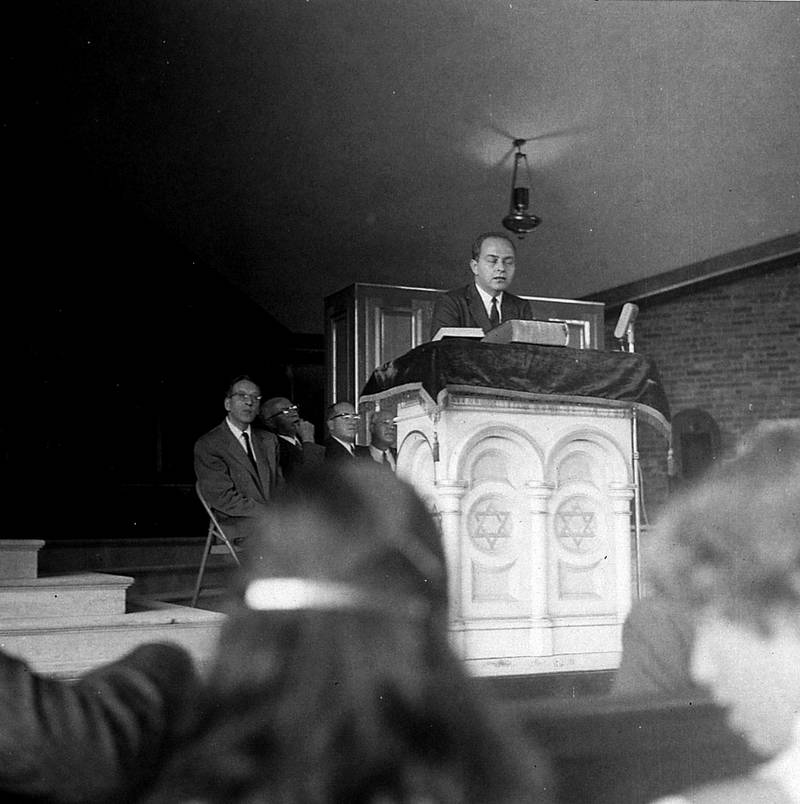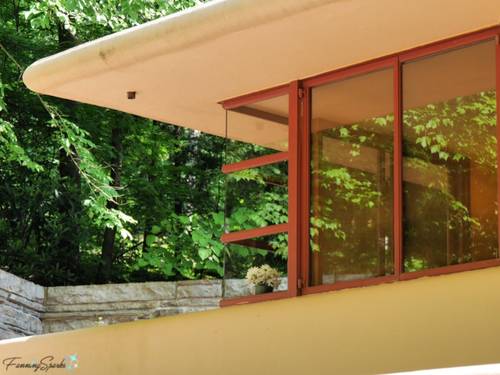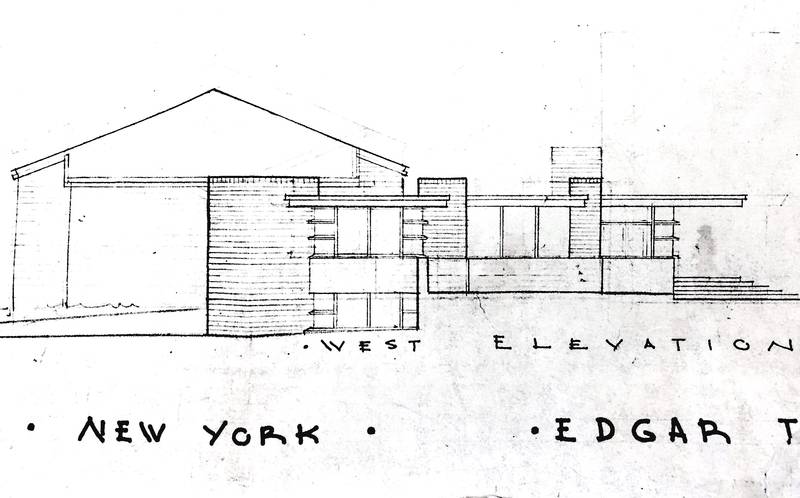Temple Architecture: The Architect
Looking at it today it might be hard to believe that the temple’s design was influenced by the work of famous architect, Frank Lloyd Wright. In fact, the architect of the temple’s original mid-1950’s form was one of Wright’s earliest and most accomplished apprentices, Edgar Tafel, seen below speaking at the lectern on October 8th, 1956 - the second day of the temple's two day dedication.
 Edgar Tafel, the son of Russian Jewish immigrants, was born in New York City in 1912. After leaving New York as a young man he moved to Wisconsin and became one of the original members of Wright’s “Taliesin Fellowship”. Tafel worked closely with Wright on many of his most famous works, including the iconic “Fallingwater” in Bear Run Pennsylvania. In an article on Fallingwater from 2002 Tafel was quoted as saying “He was a great architect... but he needed people like myself to make his designs work—although you couldn’t tell him that.”
Edgar Tafel, the son of Russian Jewish immigrants, was born in New York City in 1912. After leaving New York as a young man he moved to Wisconsin and became one of the original members of Wright’s “Taliesin Fellowship”. Tafel worked closely with Wright on many of his most famous works, including the iconic “Fallingwater” in Bear Run Pennsylvania. In an article on Fallingwater from 2002 Tafel was quoted as saying “He was a great architect... but he needed people like myself to make his designs work—although you couldn’t tell him that.”
In 1941, Tafel left Wright’s practice to open his own office and raise a family. Wright did not take the news well and a rift developed between the two. Apparently still feeling the sting of the loss of Tafel’s talents Wright, a year later in 1942 wrote "Somehow I regard the advent of another Tafel in the world as of inferior consequence compared to a Tafel able to carry on a work in the world of loyalty based upon right-minded ideas instead of selfishness."
Despite this, Tafel and Wright continued to maintain a sometimes contentious friendship that lasted until Wright’s death in 1959. Tafel also kept in touch with Wright’s infamous widow Oligvanna; visiting her at Taliesin West and attending her funeral a few years later. Never forgetting the influence the Taliesin Fellowship had on his life Tafel would write multiple books about his time working with Wright and in 1995 produced a documentary that featured the recollections of four of Wright’s apprentices..
Tafel went on to have a successful career designing homes, college campuses (SUNY Geneseo, Fulton-Montgomery Community College in Johnstown, N.Y, and Columbia-Greene Community College in Hudson, N.Y. among them), and religious buildings. His design philosophy rebelled against the predominant “glass box” style of post WWII architecture through the use of brick facades that incorporated design aspects of his “Prairie School” education under Wright with ornamental motifs of the past (such as Gothic quatrefoils). This can be seen in the design for a church house completed in 1960 for the First Presbyterian Church at Fifth Avenue and 12th Street in Greenwich Village. Tafel designed the building to compliment and blend in with the adjacent c.1846 Gothic Revival church.
Tafel lived to be 98 and in 2011 was the last member of the original Taliesin Fellows to die. Tafel was married twice, ending in divorce and the death of his second wife in 1951. Despite his leaving Taliesin to start a family in 1941 he had no children.
Though now unrecognizable following decades of additions and alterations to the temple there were what seemed to be homages to Wright’s work, Fallingwater in particular, in the original design for the entrances to the office, lobby, and kitchen areas - as seen in the images below of Fallingwater and a c.1954 concept rendering of the west elevation of the temple. We will explore the design of the temple and how it has changed over time in upcoming posts.




